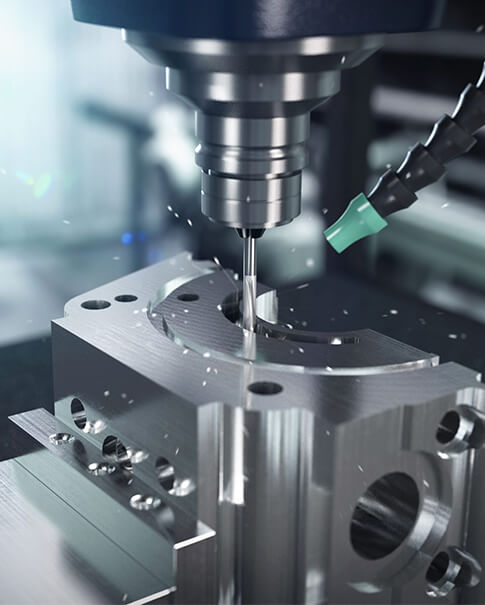
Before choosing to work with a new manufacturing process, it is important to understand the fundamentals of the technology. That is, you need to get familiar with what it is, how it works, and its various advantages. In this article, we will cover sheet metal fabrication basics.
 |
 |
What is sheet metal fabrication?
Sheet metal fabrication is a set of manufacturing processes for turning sheet metal into functional parts. However, unlike other manufacturing techniques, sheet metal fabrication actually comprises many different processes, all of which manipulate the sheet metal in different ways. These different processes may involve cutting the sheet metal, shaping it, or joining different pieces of it together.
For partially flat or hollow parts, sheet metal fabrication can be a cost-effective alternative to processes like casting and machining. The process is also quick and produces minimal material wastage.
Sheet metal fabrication is widely used for industrial and consumer parts and in specialist industries like automotive, aerospace, energy, and robotics.
1. Sheet metal fabrication: Cutting
Cutting or shearing is the process of severing the sheet metal without using heat or any other form of energy. This can be done with the help of a die or shears or blades that have a higher tensile strength.
Shearing is the most common method of cutting the sheet metal and it involves placing the sheet between two blades that have a sharp edge. Then the top blade is brought down, effectively forcing the sheet onto the bottom edge, which essentially cuts the sheet from both the upper and lower edge.
Another method that is widely popular is using a punch die. In this method, a die is placed on the surface of the sheet metal and is punched down, effectively making a hole on the surface of the shape of the die used.

Water jet cutting is also a method that is becoming very common these days. In this method a stream of high pressure water is used to cut the sheet. This leaves a very clean cut with high dimensional accuracy.
Laser cutting is another popular method used for cutting sheet metals. Laser cutting uses a high power laser which is guided with the help of computer numerical control (CNC) to direct the energized laser beam onto the metal surface. The process leaves a highly accurate and clean cut, with the highest degree of precision.
2. Sheet metal fabrication: Deformation
Another major category of sheet metal fabrication processes is sheet metal deformation. This group of processes contains myriad ways to change and manipulate sheet metal without cutting into it.
One of the main deformation processes is sheet metal bending. Using a machine called a brake, a sheet metal company can bend sheet metal into V shapes, U shapes, and channels to an angle of up to 120 degrees. Thinner gauges of sheet metal are easier to bend. It also possible to do the opposite: sheet metal manufacturers can remove the horizontal bend from strip-shaped pieces of sheet metal with the process of decambering.
The process of stamping is another deformation process, but it can also be thought of as a subcategory of its own. It involves the use of a hydraulic or mechanical stamping press equipped with a tool and die, and its operation is similar to punching — though the material does not necessarily have to be removed. Stamping can be used for specific tasks like curling, drawing, embossing, flanging, and hemming.
3. Sheet Metal Welding
Welding is a crucial part of sheet metal fabrication. Metal sheets are welded together to form the product and thus to form a good joint between sheets, proper welding is really important.
There are several methods of welding that are used in the industries. These depend upon the material type, the type of joint you want, the thickness parameter of the sheets and so on.
The most common type of welding method used is MIG welding. In this process an arc is created between the metal surface and a solid electrode wire, fed through the weld gun.

This arc melts both the metals and a weld pool consisting of both the metal sheet and the electrode is formed. Thus the electrode acts as the filler material for the welding joint.
Other methods such as TIG welding and laser welding are also used but they are not as versatile as the MIG welding process.
Design Considerations for Sheet Metal Fabrication
Here are some of the important design features to consider when modeling a sheet metal part:
Other additional features to consider include hems, notches, tabs, curls, fillets, countersinks.
GT’s Sheet Metal Fabrication
Sheet metal fabrication is a science and an art. Its extensive range of nuances and techniques makes it important for a skilled metal fabricator to handle every project. Since you know the sheet metal design basics, let a professional service take care of the rest!
With GT, you can reap the benefits of the precision sheet metal processing methods as well as our automated and highly streamlined production service. With our service, you can expect a sheet metal fabrication quote within 12 hours and lead times as quickly as three days.
Our rapid prototyping offering also includes a solid and reliable manufacturing capability (led by our expert team with 13+ years of experience) and technical and quality assurance, including SGS and RoHS material certifications, in-process quality reports, and First Article Inspection.